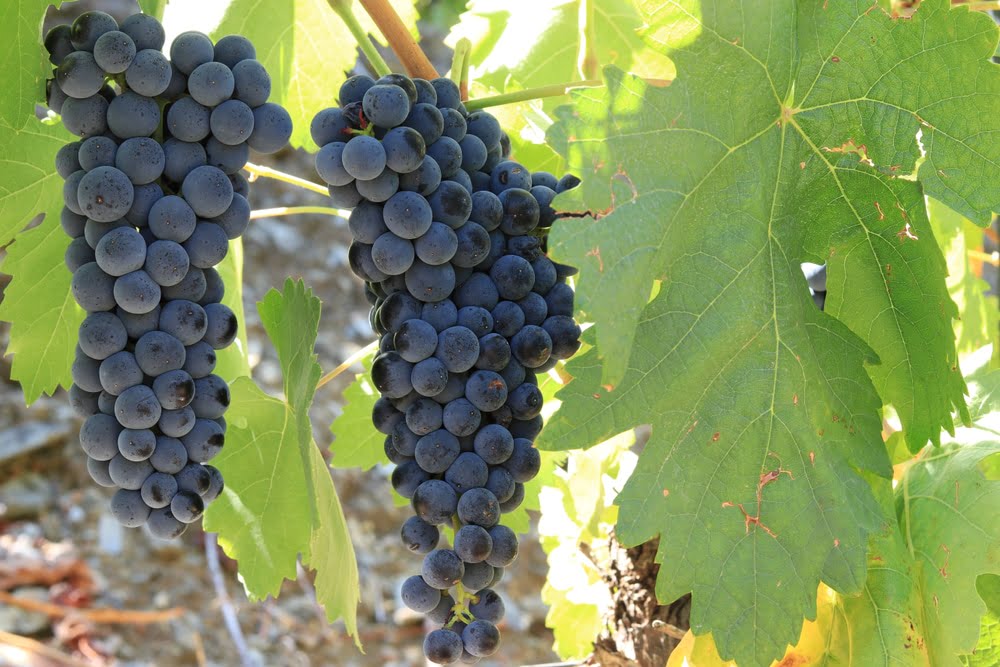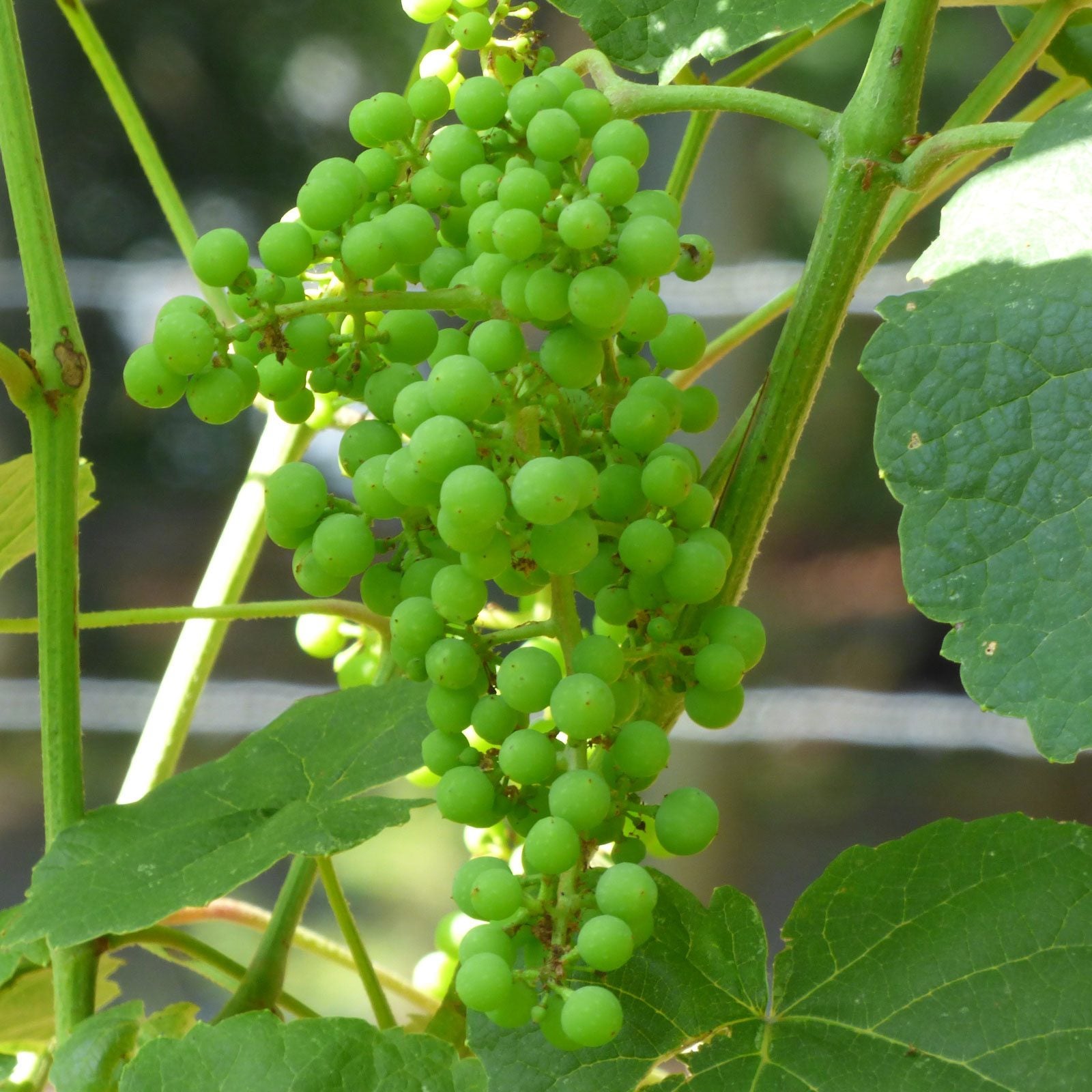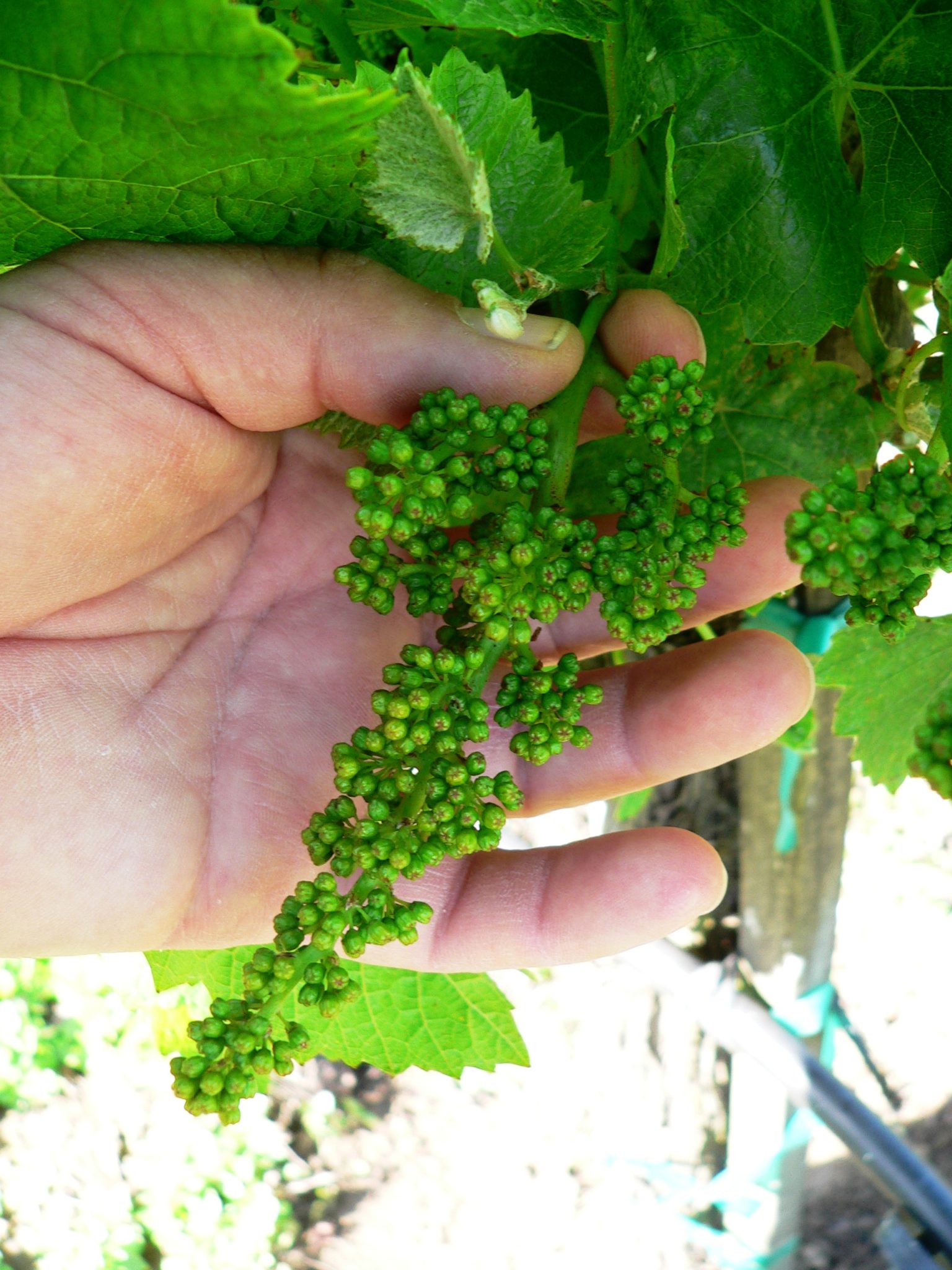If you are a grape grower or a viticulturist, understanding the optimal timing for fertilizing grapes is crucial for ensuring healthy vine growth and maximal fruit production. Proper fertilization plays a vital role in providing essential nutrients to grapevines, promoting vigorous growth, and enhancing their ability to resist diseases and pests. In this article, you will explore the key factors influencing the timing of grape fertilization, including the vine growth stage, soil conditions, and weather patterns. By gaining a comprehensive understanding of when to fertilize grapes, you will be better equipped to nurture thriving grapevines and achieve abundant, high-quality grape yields.

Understanding Grape Fertilization
Why Fertilize Grapes?
Fertilizing grapes is a crucial aspect of vineyard management that directly affects the health and productivity of grapevines. Grapes are heavy feeders, meaning they require an adequate supply of nutrients to thrive and produce high-quality fruit. Fertilization helps ensure that these nutrient requirements are met, promoting vigorous growth, optimal fruit development, and overall vineyard performance.
Importance of Proper Timing
Timing plays a crucial role in grape fertilization to maximize nutrient utilization by the vines. Applying fertilizers at the right time ensures that the nutrients are available when the plants need them the most. Proper timing also helps prevent nutrient losses, reduces environmental impacts, and promotes efficient nutrient uptake by the grapevines.
Factors to Consider for Fertilization Timing
Several factors should be considered when determining the right time to fertilize grapevines. These include the grape variety, soil conditions, climate, and growth stage of the vine. Each of these factors influences the nutrient requirements of the vines and determines the most appropriate time for fertilization.
Determining Grape Nutrient Requirements
Soil Testing
Soil testing is a valuable tool for determining the nutrient requirements of grapevines. It provides essential information about the nutrient levels present in the soil, allowing growers to make informed decisions about fertilization practices. Soil testing helps identify nutrient deficiencies or imbalances, guiding the selection of the appropriate fertilizers and their application rates.
Leaf Tissue Analysis
Leaf tissue analysis is another useful method for assessing the nutrient status of grapevines. This technique involves analyzing the nutrient content of grapevine leaves during specific growth stages. By comparing the nutrient levels in the leaves to established standards, growers can identify nutrient deficiencies or excesses and adjust their fertilization strategies accordingly.
Grape Varietal Differences
Different grape varieties have varying nutrient requirements. Factors such as growth habits, fruit load, and physiological characteristics influence the nutrient needs of specific grape cultivars. It is important for growers to consider these varietal differences when formulating fertilization plans to ensure that each variety receives the appropriate nutrients for optimal growth and fruit production.

Fertilizing Young Grapevines
First Year
During the first year of grapevine growth, the primary focus should be on establishing a strong root system. Fertilizer applications during this stage should be minimal to avoid stimulating excessive vegetative growth at the expense of root development. Applying a balanced fertilizer, such as a 10-10-10 granular fertilizer, at planting and supplemental feedings throughout the growing season can provide the necessary nutrients for the young vines.
Second Year
In the second year, the grapevines start to transition from establishment to more substantial growth. Fertilization during this stage should focus on promoting vine vigor and canopy development. Applying a nitrogen-rich fertilizer, such as ammonium nitrate or urea, in early spring can stimulate vine growth and help establish a productive canopy.
Third Year
By the third year, the grapevines should be well established and ready for full production. Fertilization at this stage should aim to support optimal fruit development and overall vine health. A balanced fertilizer, with a slightly higher proportion of phosphorus and potassium, can help meet the increased nutrient demands of fruiting vines.
Fertilizing Established Grapevines
Early Spring
Early spring is an essential time for fertilizing established grapevines as it coincides with the period of vine bud swelling and bud break. Applying fertilizer during this stage helps promote early vine growth and aids in the development of healthy shoots and leaves. It is often recommended to use a balanced fertilizer with higher nitrogen content during this time.
Pre-Bud Break
Just before bud break, grapevines benefit from another round of fertilization to support new shoot growth and bud development. This application helps ensure that the vines have an adequate nutrient supply to sustain rapid growth during the following stages. A balanced fertilizer, along with additional nitrogen sources, can facilitate strong shoot growth and bud differentiation.
Bud Break to Bloom
During the period from bud break to bloom, the grapevines undergo rapid growth and development. Nutrient availability during this stage is crucial for the production of healthy flower clusters and the development of fruiting shoots. Applying a balanced fertilizer, high in nitrogen and phosphorus, reinforces the vines’ nutrient reserves and promotes optimal flowering and fruit set.
Post-Bloom to Fruit Set
Once the grapes have gone through the bloom stage and are in the post-bloom to fruit set phase, fertilization should focus on supporting fruit development. During this period, the grapevines require higher levels of potassium, which is essential for the proper development and quality of the fruit. A fertilizer with an increased potassium content, along with balanced nitrogen and phosphorus, can meet the vines’ nutritional needs at this critical stage.
Fruit Development to Harvest
As the grapes continue to develop and mature, fertilization should shift to maintaining vine health and sustaining fruit quality. Adequate nutrient supply during this phase is crucial for sustaining fruit growth, sugar accumulation, and flavor development. Applying a fertilizer with a higher proportion of potassium and reduced nitrogen content can help maintain vine balance and promote optimal fruit ripening.
Post-Harvest
After the grape harvest, fertilization plays a vital role in replenishing the nutrient reserves of the vines and preparing them for the following growing season. Applying a balanced fertilizer with a slightly higher potassium and phosphorus content can support root development and store essential nutrients for the next year’s growth.
Using Organic or Synthetic Fertilizers
Advantages of Organic Fertilizers
Organic fertilizers offer several advantages for grapevine fertilization. They improve soil structure and enhance soil fertility over time, promoting long-term vine health. Organic fertilizers also release nutrients slowly, providing a more sustained nutrient supply for the vines. Additionally, organic fertilizers can improve soil microbial activity and nutrient cycling, creating a healthier soil ecosystem.
Disadvantages of Organic Fertilizers
Organic fertilizers may have some drawbacks. They tend to have lower nutrient concentrations compared to synthetic fertilizers, requiring larger application rates to meet the vines’ nutrient needs. Organic fertilizers also take longer to break down and release nutrients, which can delay their immediate availability to the grapevines. Moreover, organic fertilizers may be more expensive and require larger storage and application volumes.
Advantages of Synthetic Fertilizers
Synthetic fertilizers offer quick and precise nutrient delivery to the grapevines. They are highly concentrated and provide a readily available nutrient supply, which can be particularly beneficial for correcting severe nutrient deficiencies or imbalances. Synthetic fertilizers also allow growers to fine-tune nutrient ratios to meet specific grapevine requirements more efficiently.
Disadvantages of Synthetic Fertilizers
While synthetic fertilizers have their advantages, they also come with some disadvantages. Over-reliance on synthetic fertilizers can lead to nutrient imbalances and interfere with soil health and microbial diversity. Synthetic fertilizers are also prone to leaching, which can contribute to water pollution and environmental degradation if not applied correctly. Furthermore, their high concentration may increase the risk of nutrient burn or toxicity if applied in excess.
Choosing the Right Fertilizer Type
The choice between organic and synthetic fertilizers ultimately depends on the specific needs and goals of the vineyard and the grower’s preferences. Many vineyards adopt a combination of both types, utilizing the benefits of each. The decision should consider factors such as nutrient requirements, soil conditions, environmental considerations, cost, and long-term soil and vine health.
Avoiding Overfertilization and Underfertilization
Symptoms of Overfertilization
Overfertilization can have detrimental effects on grapevine health and overall vineyard productivity. Excessive nutrient application can lead to vigorous vegetative growth at the expense of fruit development. Symptoms of overfertilization may include excessively long shoots, dense canopy, excessive leaf growth, delayed fruit ripening, and reduced fruit quality. Monitoring plant response and nutrient levels can help avoid overfertilization.
Symptoms of Underfertilization
Underfertilization, on the other hand, can hinder vine growth and result in poor fruit quality and reduced yields. Grapevines affected by nutrient deficiencies may exhibit stunted growth, yellowing or discolored leaves, reduced fruit size, uneven ripening, and increased susceptibility to diseases and pests. Regular monitoring of nutrient levels and visual symptoms can help identify signs of underfertilization.
Setting Appropriate Fertilization Schedule
To avoid both overfertilization and underfertilization, it is crucial to set an appropriate fertilization schedule based on the specific needs of the grapevines. Regular soil testing, leaf tissue analysis, and visual observations should guide the timing and application rates of fertilizers. Adjustments may be necessary based on plant response and the desired growth and fruiting goals for the vineyard.

Considering Climate and Growing Conditions
Cool or Moderate Climate
In cool or moderate climates, grapevines have different nutrient requirements compared to those in warmer regions. Cooler climates often have higher soil moisture levels and slower nutrient release rates. Adjusting fertilization practices to match these conditions is essential to prevent nutrient deficiencies or imbalances. Soil testing and leaf tissue analysis can help determine the appropriate nutrient levels and guide fertilization strategies in cool or moderate climates.
Warm or Hot Climate
In warm or hot climates, grapevines experience higher water and nutrient demands due to increased evapotranspiration rates. Fertilization practices in these regions should account for the vine’s increased nutrient uptake and potential nutrient losses through leaching. Applying fertilizers more frequently, split applications, and adjusting nutrient ratios can help address the higher nutrient requirements of grapevines in warm or hot climates.
Sandy or Clay Soil
Soil type also influences the nutrient availability and retention capacity for grapevines. Sandy soils tend to have lower nutrient-holding capacity and may require more frequent fertilization to prevent nutrient leaching. Clay soils, on the other hand, have higher nutrient retention capacity but may require additional measures to ensure proper nutrient uptake by the vines. Soil testing and nutrient management plans should consider the soil’s characteristics to optimize nutrient availability.
Organic Matter Content
The organic matter content in the soil directly affects nutrient cycling and availability for grapevines. Soils with higher organic matter content generally have better nutrient retention and release capabilities. Regular incorporation of organic matter, such as compost or cover crops, can improve soil fertility and enhance nutrient availability for the grapevines. Monitoring organic matter levels and incorporating appropriate fertilization practices can help manage nutrient availability effectively.
Monitoring Grapevine Health
Visual Symptoms
Regular visual monitoring of the grapevines is essential for assessing their health and nutritional status. Visual symptoms of nutrient deficiencies or toxicities can manifest as yellowing or chlorosis of leaves, leaf discoloration, stunted growth, poor fruit set, or abnormal fruit development. Prompt identification and diagnosis of visual symptoms enables growers to take appropriate corrective actions, including adjusting fertilization plans, to address the specific nutrient issues.
Vine Growth and Development
Monitoring grapevine growth and development provides valuable insights into the vines’ overall health and productivity. Vigorous shoot growth, balanced canopy development, uniform bud break, and appropriate fruit set are indicators of well-nourished and healthy grapevines. Conversely, stunted growth, weak shoot development, irregular bud break, and poor fruit set may indicate nutrient deficiencies or imbalances. Close observation of vine growth and development allows growers to fine-tune fertilization practices accordingly.
Nutrient Deficiency or Toxicity Symptoms
Nutrient deficiency or toxicity symptoms in grapevines can provide valuable information about the vines’ nutrient status. These symptoms may vary depending on the specific nutrient(s) involved. Common nutrient deficiency symptoms in grapevines include yellowing or interveinal chlorosis of leaves, reduced leaf size, poor fruit set, or abnormal fruit development. Toxicity symptoms may include leaf burn, necrosis, or abnormal growth patterns. Leaf tissue analysis and visual observations can assist in identifying and addressing nutrient issues in the vineyard.

The Role of Pruning and Canopy Management
Effect of Pruning on Nutrient Uptake
Pruning has a significant impact on nutrient uptake and utilization by grapevines. Proper pruning practices promote a balanced canopy structure and improve light penetration and air circulation within the canopy. This, in turn, enhances the photosynthetic capacity of the leaves and the vine’s overall energy production. Adequate nutrient uptake and transportation within the vine are crucial for healthy growth, fruit development, and sugar accumulation.
Canopy Structure and Sunlight Distribution
Canopy management plays a crucial role in nutrient distribution and light exposure within the grapevine canopy. A well-managed canopy allows for optimal light interception, which directly influences photosynthesis and sugar production. Ensuring even sunlight distribution across the canopy minimizes the risk of nutrient deficiencies, promotes uniform fruit ripening, and enhances grape quality. Pruning and canopy management practices should be tailored to the specific vineyard conditions and grape variety to achieve the desired results.
Ongoing Fertilization Adjustments
Observing Plant Responses
Regular observation of plant responses is essential for ongoing fertilization adjustments. Monitoring vine growth, leaf color, shoot development, and fruit quality provides valuable feedback on the effectiveness of the current fertilization program. If visual symptoms indicate nutrient deficiencies or imbalances, adjustments can be made to the fertilization schedule or nutrient application rates. This ongoing observation and adaptation contribute to maintaining vine health and optimizing grape production.
Modifying Fertilization Based on Yield
Yield is a crucial factor to consider when making fertilization adjustments. Different yield levels impose varying nutrient demands on grapevines. Higher-yielding vines require increased nutrient inputs to support the production of larger fruit clusters and higher fruit quantities. Adjusting the fertilization program based on expected yield and historical performance can help ensure that the grapevines receive the necessary nutrients to develop and produce high-quality grapes consistently.
Annual Soil Testing
Annual soil testing is a valuable practice for maintaining an accurate understanding of the nutrient status and needs of the vineyard. Soil conditions can change over time, and regular testing helps identify any nutrient imbalances or deficiencies. By conducting soil tests annually, growers can make informed decisions regarding adjustments to fertilization programs, taking into account changes in soil nutrient levels or other soil properties. This proactive approach contributes to sustainable vineyard management and optimal grapevine health.
In conclusion, understanding grape fertilization is essential for achieving healthy vine growth, high-quality fruit, and consistent yields. Proper timing, nutrient requirements, and fertilization strategies all play integral roles in vineyard management. By considering factors such as soil testing, grape varietal differences, climate, and growing conditions, growers can tailor their fertilization practices to meet the specific needs of their grapevines. Ongoing monitoring of vine health and adjustments to fertilization programs based on plant response and yield goals contribute to long-term success in grape production.



